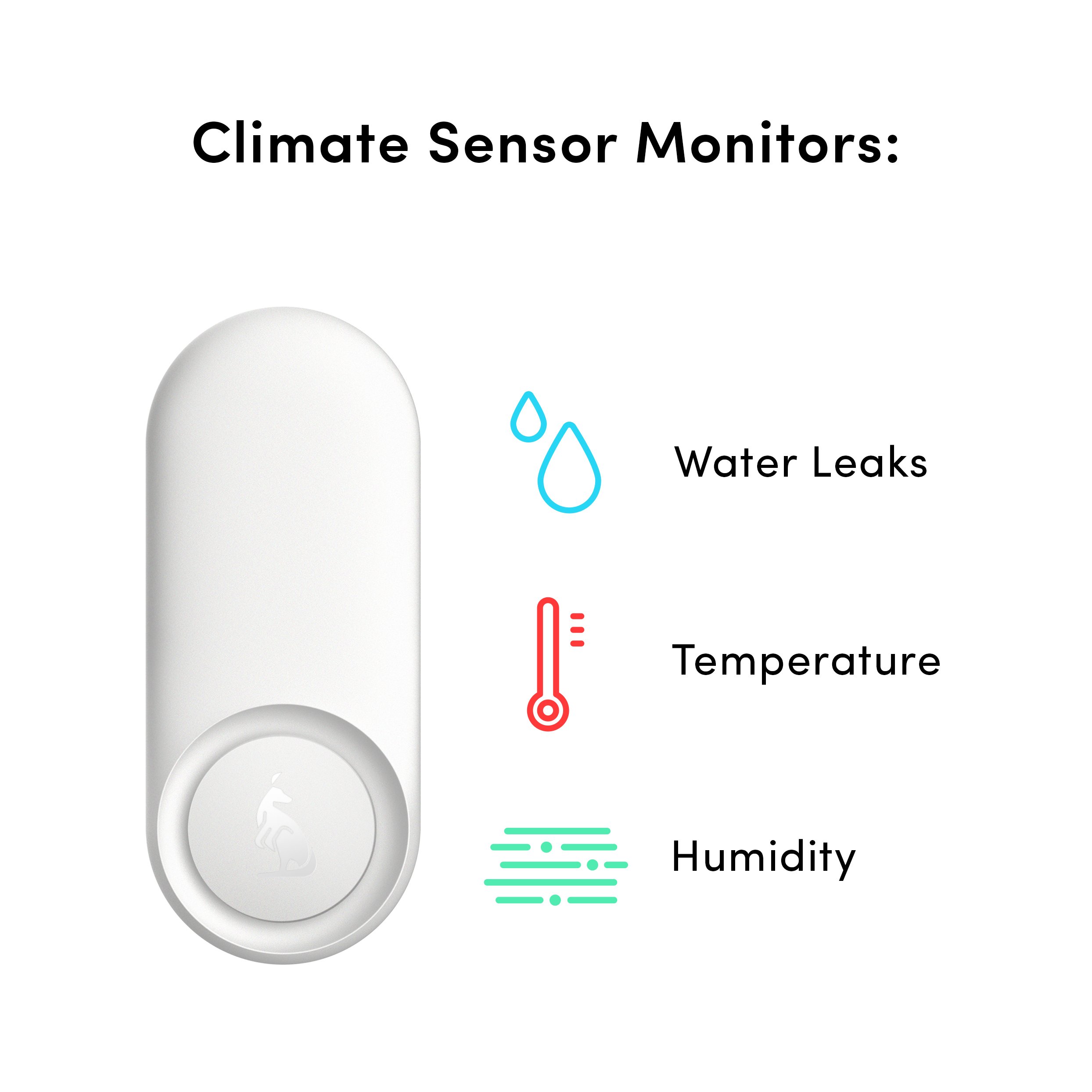Ambient Conditions: the Ideal Temperature for Your Living Space
Finding the perfect room temperature can feel like an endless quest. One moment, you’re shivering; the next, you’re sweating. But what if you could create a consistently comfortable and healthy living environment without constant thermostat adjustments? Enter the Kangaroo Water & Climate Sensor, your all-in-one solution for monitoring and optimizing your home’s ambient conditions.
What Is “Room Temperature”?
The term “room temperature” refers to a comfortable temperature range rather than a fixed degree. Traditionally, this range hovers around 68°F to 72°F (20°C to 22°C), which is optimal for most people. However, several factors influence what feels comfortable:
Activity Level: Physical exertion generates heat, so a cooler environment may feel better during a workout compared to relaxing on the couch.
Humidity Levels: High humidity can make a space feel warmer, while low humidity can make it feel colder.
Geography and Climate: People in warmer regions often prefer slightly higher indoor temperatures compared to those in cooler climates.
Why Room Temperature Matters
Maintaining the ideal temperature isn’t just about comfort; it also affects your health, productivity, and energy efficiency:
Better Sleep Quality: Cooler temperatures (around 60°F to 67°F) promote better sleep by aligning with your body’s natural temperature drop at night.
Enhanced Productivity: Studies show that temperatures between 68°F and 72°F enhance focus and cognitive function.
Energy Efficiency: Optimizing your thermostat settings can lower energy consumption, saving you money and reducing your carbon footprint.
How the Kangaroo Water & Climate Sensor Helps
The Kangaroo Water & Climate Sensor offers more than just temperature monitoring. It provides real-time data and actionable insights to help you maintain an ideal indoor environment. Key features include:
Temperature Monitoring: Keep tabs on your home’s temperature and adjust settings to ensure consistent comfort.
Humidity Control: Prevent mold and respiratory issues by maintaining optimal humidity levels.
Water Leak Detection: Catch leaks early to avoid costly water damage.
Custom Alerts: Receive notifications if the temperature or humidity exceeds preset thresholds.
Ideal Room Temperatures for Different Activities
Sleeping
Adults: 68°F to 72°F (20°C to 22°C)
Babies: 68°F to 70°F (20°C to 21°C)
Seniors: 70°F to 75°F (21°C to 24°C)
Working From Home
68°F to 72°F (20°C to 22°C): A slightly cooler environment boosts focus and alertness.
Exercising
60°F to 68°F (15.5°C to 20°C): Prevents overheating during workouts.
Cooking
Ventilation Is Key: Use exhaust fans or open windows to manage heat from appliances.
Studying
68°F to 72°F (20°C to 22°C): This range supports focus and minimizes distractions.
Personalized Comfort with Smart Home Technology
Smart home devices like the Kangaroo Water & Climate Sensor make temperature management effortless. Features include:
Quick Installation: No tools are required—place it near pipes, appliances, or other critical areas.
Wi-Fi Connectivity: Monitor and adjust settings remotely via the mobile app.
Custom Alerts: Stay informed about temperature, humidity, and water leaks in real-time.
Additional Benefits of Optimizing Ambient Conditions
Energy Savings
By monitoring and adjusting your home’s temperature and humidity levels, you can avoid unnecessary heating or cooling cycles. This not only lowers your energy bills but also supports environmental sustainability.
Improved Health
Maintaining optimal indoor conditions helps prevent issues like dry skin, respiratory problems, and overheating.
Explore Related Articles Here
6-ways-to-use-kangaroo-water-climate-sensors
Reducing-moisture-how-to-lower-humidity-at-your-place
Home-essentials-stocking-up-for-peace-of-mind-and-convenience
Ready to Take Control of Your Comfort?
The Kangaroo Water & Climate Sensor offers a simple, effective way to achieve your ideal living environment. From better sleep to energy savings, this device ensures you’re always in control.
Discover how this smart solution can transform your home by learning more here.












